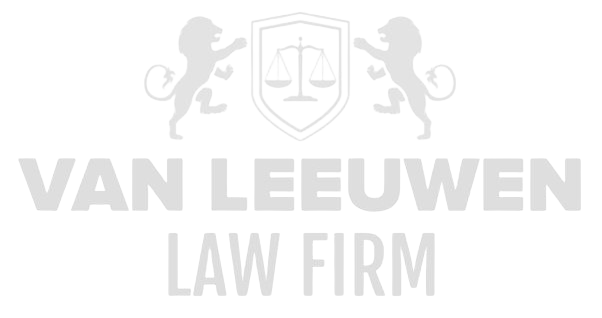The question of AI governance is rapidly developing into a central theme within the strategic and operational design of organizations that deploy automated decision-making. The introduction of normative frameworks such as the European AI Act places significant responsibility on directors, supervisory bodies and compliance functions to implement a robust governance architecture that is both legally sound and technologically future-proof. The deployment of complex models – ranging from predictive algorithms to generative systems – confronts organizations with an unprecedented interconnection of technical, legal and ethical risks. This interconnection demands a structured and demonstrable approach to risk identification, internal control, transparency and oversight, ensuring that each step in the chain from development to deployment adheres to strict standards of due care. Within this context, AI governance is not merely a compliance exercise, but an essential component of responsible corporate management, reputation stewardship and stakeholder trust.
At the same time, the operationalization of these governance requirements introduces substantial challenges. The nature of AI systems – which frequently operate as adaptive, probabilistic mechanisms – requires governance structures that allow sufficient space for technological innovation while embedding rigorous controls against potential risks such as discrimination, cybersecurity vulnerabilities, data quality issues and insufficient model explainability. This tension between flexibility and stringent regulation necessitates a nuanced application of compliance instruments. It is within this dynamic that organizations are compelled to reassess their internal processes, documentation standards, accountability lines and evaluation mechanisms. The implementation of AI governance is therefore a multidimensional undertaking in which legal norms, technical expertise and executive responsibility converge with precision.
Implementation of AI Rules within Governance Structures
The practical implementation of AI regulation within governance structures requires a system embedded in the existing corporate governance architecture yet tailored to the unique characteristics of automated decision-making. The EU AI Act introduces obligations that cannot be approached in isolation; it requires an integrated policy structure in which compliance mechanisms, technical assessments and internal control systems are interwoven. This means that organizations must develop policies that are not merely descriptive but operationally applicable across all stages of AI system development and decision-making. Each policy line must be supported by clear responsibilities, escalation pathways and assessment criteria to ensure consistency, traceability and auditability.
The implementation of AI rules further requires that directors and senior management demonstrate active oversight of compliance with both normative and technical requirements, and that governance bodies are equipped with sufficient expertise to evaluate AI-related risks. This includes ensuring that audit committees and risk committees are systematically involved in monitoring AI programmes, while legal and ethical committees contribute to assessments of proportionality, transparency and societal impact. Integrating AI governance into broader compliance programmes therefore creates a governance structure that extends beyond technical implementation alone.
Finally, implementation entails an ongoing dialogue between technological functionality and legal requirements. Organizations must design processes that translate regulatory interpretations into concrete technical configurations, benchmarks, validation protocols and operational controls. This necessitates a systematic approach in which legal teams, data scientists, information security specialists and policy developers collaborate to form a workable framework that aligns with the AI Act as well as applicable sector-specific regulation. Through this interdisciplinary cooperation, a governance model emerges that operates not merely reactively, but proactively, capable of identifying and mitigating risks in advance.
Risk Classification and Impact Assessments for AI Systems
Risk classification constitutes a core component of the EU AI Act’s regulatory structure and serves as the foundation for designing organizational control measures. AI systems are assessed based on their potential effects on fundamental rights, societal values and operational stability. This classification is not a static exercise but a dynamic process in which systemic risks – such as unintended discrimination, manipulation of decision-making or persistent error patterns – are continuously reassessed. Risk classification must be anchored in formal governance processes so that the assessment remains consistent, reproducible and transparent to supervisory authorities.
Impact assessments play a crucial role in translating risk evaluations into actionable insights. These assessments examine both the technical characteristics of the model and the context of the application. They include analyses of data quality, model assumptions, technical limitations, potential adverse effects and the effectiveness of mitigation measures. Such analyses must be thoroughly documented and included in the system’s risk dossier, enabling internal and external auditors to review and verify the assessment. A well-executed impact assessment also supports decision-making regarding the proportionality and necessity of deploying AI in specific processes.
The use of impact assessments further requires organizations to establish structured review cycles. AI systems often evolve over their lifecycle due to new data, updates or retraining processes. As a result, risks may shift or intensify. Governance structures must therefore include mechanisms enabling reassessment at predefined intervals or following significant system modifications. This creates a risk management process that remains aligned with the system’s evolving technological and operational context.
Transparency and Explainability Requirements in Decision-Making
Transparency is a fundamental principle of the AI Act and is essential for legal defensibility, societal legitimacy and the effectiveness of internal control mechanisms. Transparency requirements encompass obligations to provide insight into the functioning, limitations and objectives of AI systems, as well as obligations to inform users and affected individuals about the use of such systems. This applies particularly in contexts where AI significantly influences decisions that affect individuals’ rights or interests. The governance structure must ensure that this transparency is consistently and legally robustly safeguarded, with information made accessible without unnecessarily disclosing sensitive proprietary details.
Explainability is a related but technically more complex requirement. AI systems, especially those based on deep learning, often exhibit non-linear and probabilistic decision-making structures that are not inherently interpretable. Governance models must therefore incorporate methodologies for producing explainability, such as model-agnostic techniques, decision trees, concept-based explanations or simplified model representations. The choice of method must align with the model’s nature, the complexity of the application and the relevant regulatory requirements. Importantly, explainability must not be treated solely as a technical exercise but as part of a broader accountability framework.
Transparency and explainability requirements must also be integrated into internal oversight processes. Directors, auditors and compliance teams must have access to clear documentation, reporting and technical explanations that enable them to evaluate whether AI systems operate correctly and whether associated risks are adequately mitigated. Consistent application of these requirements strengthens both external accountability to regulators and internal governance quality by ensuring that decision-making is grounded in verifiable and traceable information.
Documentation Standards for Model Development and Data Lineage
Documentation forms a foundational element of responsible AI use and is intrinsically linked to compliance with the AI Act. High-quality documentation enables the reconstruction of an AI system’s full lifecycle, from initial design decisions to operational performance after deployment. Within governance structures, documentation must function as both a legal and technical dossier that provides insight into design principles, underlying assumptions, data processing decisions, hyperparameter settings, validation strategies and monitoring mechanisms. Such documentation must be systematic, reproducible and consistent to support auditability by internal and external stakeholders.
Data lineage constitutes a critical component of this documentation obligation. It entails the full traceability of data throughout the AI model lifecycle, including origin, transformations, quality assessments and application context. Governance models use data lineage as a foundational tool for risk assessments, bias detection, compliance analysis and audit processes. It enables organizations to identify and correct deviations or irregularities in data flows and supports compliance with sector-specific regulations, including privacy and consumer protection norms, by demonstrating which personal data or relevant datasets have been used.
Finally, ensuring documentation standards requires organizations to invest in tooling and processes that facilitate automatic recording of model changes, data processing workflows and version control. Integrating these processes into the daily operations of data science teams guarantees a continuous and reliable flow of information. As a result, documentation is not perceived as an administrative burden but as a structural element of responsible AI management and a crucial evidentiary component within compliance procedures.
Monitoring and Post-Deployment Auditing of Model Performance
Monitoring AI systems constitutes a critical pillar within AI governance, as models may behave differently in real-world conditions than in controlled development or testing environments. Governance frameworks must establish continuous observation mechanisms capable of detecting drift, performance degradation, emergent bias or unwanted interactions between the model and changing environmental factors. Monitoring processes must focus not only on technical performance but also on legal and ethical compliance, including adherence to transparency requirements and proportionality standards. This calls for a multidisciplinary approach combining technical telemetry with legal assessment criteria.
Post-deployment auditing provides an additional layer of oversight, enabling organizations to retrospectively assess whether the AI system has operated in accordance with its design, regulatory obligations and internal governance standards. These audits must be based on an independent and objective evaluation framework and may be conducted internally or externally. Audits may examine model outputs, data usage, log files, decision pathways and the effectiveness of mitigation measures. The objective is not only to uncover deficiencies but also to implement structural improvements that reduce future risks.
A robust monitoring and auditing framework further requires that organizations structure their infrastructure to securely and comprehensively store data regarding model behavior, user interaction and operational performance. This information supports both real-time interventions and in-depth periodic evaluations. By integrating monitoring and auditing into the broader governance structure, organizations establish a cyclical control mechanism that enhances the reliability, safety and legal defensibility of AI systems on a sustained basis.
Mitigation of Bias, Fairness Risks and Unintended Effects
Mitigating bias and fairness risks within AI systems requires a thorough and methodological approach that extends significantly beyond purely technical adjustments. Bias often arises from historical distortions present in data, structural patterns embedded in societal decision-making, or unintended correlations amplified during the modelling process. Governance structures must therefore include an analytical framework in which datasets are systematically assessed for representativeness, completeness and potential distortions that may lead to unjustifiable outcomes. These assessments must be meticulously documented so that internal auditors, regulators and stakeholders have clear insight into the nature of the identified risks and the effectiveness of the corrective measures implemented.
The mitigation of fairness risks also requires an in-depth evaluation of the context in which an AI system is deployed. The impact of bias varies considerably depending on the policy objective, the applicable legal obligations and the degree to which human decision-makers rely on model outputs. Governance frameworks must therefore incorporate fairness principles into the functional specifications of AI systems through methods such as fairness constraints, adjusted loss functions, separate analyses for subpopulations and enhanced validation procedures. These measures must be embedded in both the development and operational phases so that fairness is treated as a continuous process rather than a one-off compliance checkpoint.
Finally, mitigating unintended effects requires a comprehensive approach that extends beyond the technical functioning of the model. Organisations must conduct scenario analyses to anticipate unexpected behaviours that may arise when the system is exposed to changing conditions, strategic manipulation or atypical input patterns. These evaluations must be linked to monitoring tools designed to detect anomalies at an early stage. In doing so, organisations establish a mechanism that not only prevents discriminatory outcomes but also mitigates broader systemic harm that may emerge from unpredictable model behaviour.
Integration of Cybersecurity in AI Governance
Integrating cybersecurity into AI governance is an essential component of a robust control environment. AI systems face unique threats, including data poisoning, model inversion, adversarial attacks and manipulation of training datasets. Governance structures must therefore incorporate security mechanisms that go beyond traditional IT security measures. This includes the implementation of secure development environments, strict access controls, encryption of sensitive data flows and advanced detection tools that identify anomalies indicative of targeted attacks. These measures must be calibrated to the risk classification of the system as defined in the AI Act.
Moreover, cybersecurity within AI governance requires organisations to safeguard the entire lifecycle of an AI system, including data collection, training, testing, deployment and post-deployment monitoring. Embedding security protocols in each phase ensures that vulnerabilities are systematically identified and remediated before they cause operational or legal consequences. Governance mechanisms must also mandate periodic penetration tests, red-team exercises and independent security audits to assess and enhance the effectiveness of security controls.
Ultimately, cybersecurity constitutes a critical aspect of the legal and contractual responsibilities borne by leadership and organisations. An insufficiently secured AI system may lead not only to operational disruptions but also to breaches of legal obligations, reputational damage and increased liability exposure. To mitigate these risks, cybersecurity must be integrated into decision-making processes, risk assessments and escalation procedures. This creates a holistic security framework that structurally supports the reliability, integrity and resilience of AI systems.
Accountability and Liability Models for Directors
Accountability within AI governance requires that organisational responsibilities be clearly delineated and that directors can demonstrate that adequate risk-mitigation measures have been implemented. The AI Act introduces obligations directly affecting the duty of care of senior leadership, including documentation requirements, risk assessments and transparency obligations. Directors must ensure the existence of governance structures with formal accountability lines that clearly assign responsibility for system design, implementation, monitoring and compliance. These structures must be demonstrably effective so that they withstand regulatory scrutiny and potential liability proceedings.
Furthermore, an effective accountability model necessitates investment in the knowledge and training of decision-makers and supervisory bodies. Directors must possess sufficient understanding of the technical, legal and ethical implications of AI applications to fulfil their oversight responsibilities. Governance frameworks may therefore include obligations for periodic reporting, risk updates, independent audits and escalation mechanisms that enable timely corrective action. Institutionalising these information flows results in a robust accountability mechanism.
Finally, liability models must be aligned with the nature of the AI system and the organisation’s position within the value chain. Depending on whether the organisation acts as a provider, importer, distributor or user, different legal obligations may apply, each bringing distinct liability risks. A carefully designed governance framework identifies these risks, links them to appropriate responsibilities and establishes internal controls such as contractual provisions, insurance arrangements and escalation procedures. This provides a sound basis for legally defensible and transparent corporate oversight.
Vendor Management in the Use of Third-Party AI
Vendor management plays a critical role when organisations rely on third parties for the delivery, development or hosting of AI systems. Under the AI Act, users of AI systems retain responsibilities, meaning an organisation cannot rely solely on the assurances of external vendors but must itself ensure compliance with legal and internal standards. This requires contractual frameworks that establish extensive information obligations, audit rights, documentation provision and guarantees related to risk management, cybersecurity and data quality. Contracts must explicitly address transparency requirements, model explainability and compliance duties as defined by applicable regulations.
Vendor management must also be embedded within a broader governance process that includes systematic due diligence of suppliers. This due diligence must evaluate not only the technical quality of the AI system but also the vendor’s governance structures, security measures and compliance processes. Organisations may use risk-based assessment models, periodic evaluations and standardised vendor scoring criteria. Such an approach enables a repeatable and legally defensible framework for procuring and managing AI solutions.
Effective vendor management further requires continuous monitoring of organisational dependence on external suppliers, particularly regarding updates, model changes and performance deviations. Because third-party models may be modified without direct notice to users, governance structures must include procedures for ongoing verification of compliance, documentation availability and security effectiveness. This creates a control mechanism that substantially reduces the risks associated with outsourced AI functionality.
Interaction with Privacy, Consumer and Sector-Specific Regulations
The interaction between AI regulation and existing legal frameworks presents a significant source of complexity within AI governance. AI systems operate within a legal landscape in which the AI Act is only one component of a broader regulatory environment. AI deployments often intersect with privacy regulations, including obligations relating to transparency, data minimisation, purpose limitation and requirements for DPIAs. Organisations must develop governance structures that integrate these frameworks cohesively so that inconsistencies or conflicting obligations are avoided. This requires detailed analysis of data flows, legal bases for processing and technical safeguards that comply with both AI-specific and privacy-specific rules.
Consumer protection regulations also play a significant role, particularly in cases where AI is used for profiling, decision-making or personalised offerings. Organisations must consider transparency and information obligations, prohibitions on misleading practices and the duty of care applicable to digital products and services. Governance models must therefore include mechanisms for evaluating and mitigating the impact of AI on consumer rights, including measures addressing undue influence, opaque personalisation or insufficient disclosure.
Finally, sector-specific regulations — such as financial supervision laws, healthcare regulations or telecommunications rules — must be integrated into the governance framework. These sectoral requirements often impose additional obligations beyond the general rules set out in the AI Act. A coherent governance model therefore establishes a unified control and accountability structure in which sectoral, privacy and AI-specific rules are jointly applied, thereby reducing risks and ensuring demonstrable compliance.















